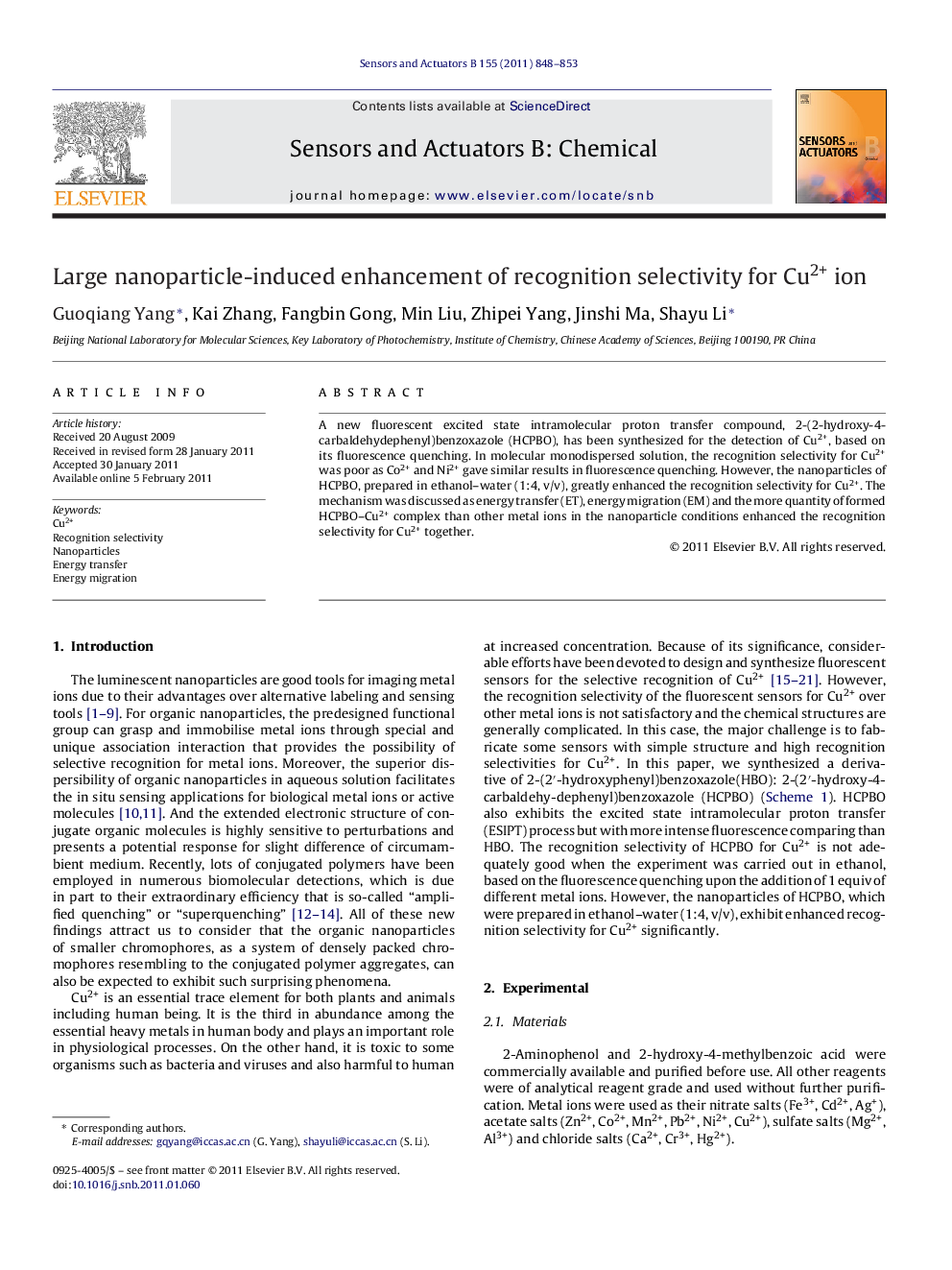| Article ID | Journal | Published Year | Pages | File Type |
|---|---|---|---|---|
| 744153 | Sensors and Actuators B: Chemical | 2011 | 6 Pages |
Abstract
A new fluorescent excited state intramolecular proton transfer compound, 2-(2-hydroxy-4-carbaldehydephenyl)benzoxazole (HCPBO), has been synthesized for the detection of Cu2+, based on its fluorescence quenching. In molecular monodispersed solution, the recognition selectivity for Cu2+ was poor as Co2+ and Ni2+ gave similar results in fluorescence quenching. However, the nanoparticles of HCPBO, prepared in ethanol–water (1:4, v/v), greatly enhanced the recognition selectivity for Cu2+. The mechanism was discussed as energy transfer (ET), energy migration (EM) and the more quantity of formed HCPBO–Cu2+ complex than other metal ions in the nanoparticle conditions enhanced the recognition selectivity for Cu2+ together.
Related Topics
Physical Sciences and Engineering
Chemistry
Analytical Chemistry
Authors
Guoqiang Yang, Kai Zhang, Fangbin Gong, Min Liu, Zhipei Yang, Jinshi Ma, Shayu Li,
